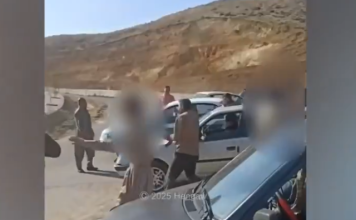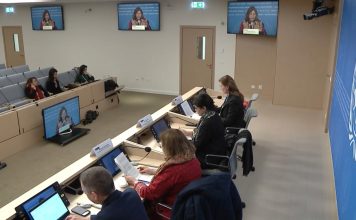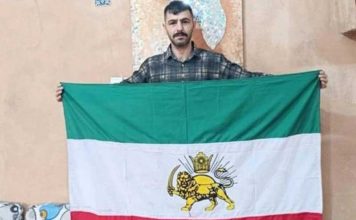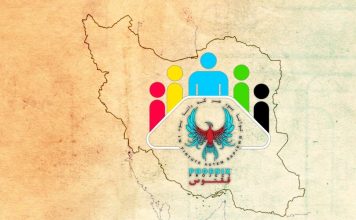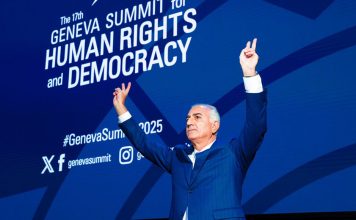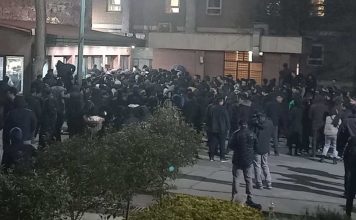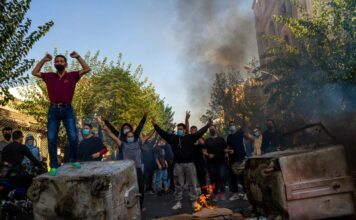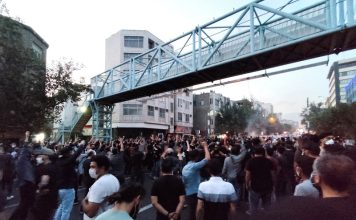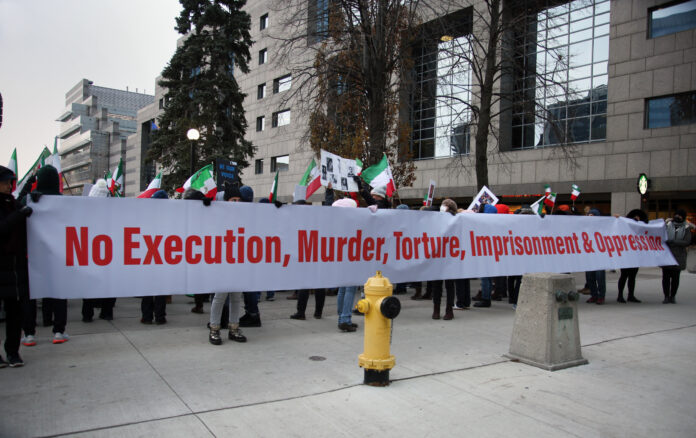
Dec 12 (Reuters) – Iran‘s clerical rulers have faced the biggest protests in years since September when Mahsa Amini died in the custody of the morality police who enforce strict dress codes.
Following are some of the events since her arrest:
Sept. 13 – Mahsa Amini, from Iran‘s Kurdistan region, is detained by morality police in Tehran for “inappropriate attire”.
Sept. 16 – Amini dies after falling into a coma. Authorities say she suffered a heart attack after being taken to a station to be “educated”. Her family deny she had any heart problems. Her father later says she had bruises on her legs, and holds police responsible for her death. President Ebrahim Raisi demands an investigation. Protests begin on social media and in the street.
Sept. 17 – Protests erupt during Amini’s funeral in Saqez, her home town in Kurdistan. Security forces fire tear gas. Protests spread to the provincial capital. Chants of “death to the dictator” are heard, with some women removing headscarves.
Sept. 18 – Demonstrations spread. Hundreds gather around the University of Tehran, shouting “Woman, Life, Freedom”.
Sept. 19 – Protests intensify, taking place in Rasht, Mashhad, Isfahan and Tehran, where security forces and demonstrators clash
Sept. 20 – An aide to Supreme Leader Ayatollah Ali Khamenei says he visited Amini’s family to pay condolences and that Khamenei was pained by her death. An official blames terrorist groups for deaths in Kurdistan.
Sept. 21 – Iranian authorities curb access to Instagram and WhatsApp. Official sources confirm eight deaths in the unrest, including a member of the police and a member of the Basij militia.
Sept. 22 – Protesters in Tehran and several other cities torch police stations and vehicles. Raisi says “acts of chaos” are unacceptable. The United States imposes sanctions on Tehran’s morality police.
Sept. 23 – The state organises rallies in several cities with marchers calling for protesters to be executed. The army vows to “confront the enemies’ various plots”. State TV says the death toll is 35.
Sept.24 – After accusing armed dissidents of involvement in the unrest, the Revolutionary Guards carry out the first of several attacks on Iranian militant opposition bases in the Kurdish region of northern Iraq.
Sept. 27 – Security forces clash with demonstrators in dozens of cities. Despite the crackdown, social media from inside Iran continue to show protesters chanting, “Woman, Life, Liberty”, while women wave and burn veils.
Sept. 30 – In the deadliest day since protests started, Amnesty International says security forces killed 66 people, including children, in the southeastern city of Zahedan in a crackdown after Friday prayers.
State TV says militants had fired on a police station, prompting a shootout. The Guards say five of its forces and the Basij are killed.
Oct. 3 – In his first comments on the unrest, Khamenei backs the security forces. He says Amini’s death “deeply broke my heart” and calls it a “bitter incident” provoked by Iran‘s enemies. Defying his warning, Iranians in several cities chant “We want regime change” and “death to Khamenei”.
Oct. 7 – Authorities deny reports security forces killed a 16-year-old girl, saying she committed suicide. It is the second time in a week they said a teenage girl died falling from a roof. A coroner’s report denies Amini died from blows to the head and limbs while in custody, linking her death to pre-existing conditions.
Oct. 8 – Female students chant “get lost” as Raisi visits their university campus in Tehran.
Oct. 10 – Protests spread to Iran‘s energy sector, according to reports on social media showing workers at Abadan and Kangan oil refineries and Bushehr Petrochemical Project demonstrating.
Oct. 13 – Members of the Basij militiadeploy in Kurdish areas where seven people are killed.
Oct. 15 – A fire breaks out in Tehran’s Evin prison, where many political and dual-national detainees are held, and witnesses report hearing gunfire. The judiciary later says eight people died in the unrest. Sources tell Reuters trouble broke out after riot police began patrols.
Oct. 19 – Elnaz Rekabi, an Iranian climber who was widely seen to show support for the protesters by competing in an international tournament without a headscarf, returns to Tehran. She says she had climbed without a hijab unintentionally.
Oct. 21 – Protests break out in the southeast, with demonstrators attacking banks, state media reports.
Oct. 26 – Iranian riot police deploy in large numbers in Amini’s home town of Saqez, Tehran and the northern cities of Tabriz and Rasht, witnesses say, marking 40 days since she died. A Tehran refinery official denies workers have staged a strike after videos on social media appear to show one.
An attack on a Shi’ite Muslim shrine in Shiraz kills 15 people. Islamic State claims responsibility.
Oct. 29 – The Guards warn protesters to stay off the streets, but protesters defy the warning.
Oct. 31 – A semi-official news agency reports that about 1,000 people will face public trial over unrest in Tehran.
Nov. 2 – Iran denies posing a threat to Saudi Arabia, after the Wall Street Journal reports that Riyadh had shared intelligence with the United States warning of an imminent attack from Iran on targets in the kingdom.
Nov. 3 – A cleric at a Shi’ite mosque is shot dead in Zahedan, a mostly Sunni Muslim city.
Nov. 4 – State-sponsored annual rallies mark the 1979 seizure of the U.S. embassy in Tehran, a key moment in the country’s Islamic Revolution that year. Images broadcast on state TV show tens of thousands of people attending rallies.
Nov. 9 – Video clips show Iran‘s water polo team failing to sing the national anthem in what protesters see as the latest show of support by Iranian athletes for the demonstrations.
Iran‘s intelligence minister warns Saudi Arabia there is no guarantee of Tehran continuing its “strategic patience,” after the Guards tell Riyadh to control its media outlets.
Nov. 11 – Thousands of Iranians protest in Zahedan to mark the Sept. 30 crackdown.
Nov. 14 – French President Emmanuel Macron characterises the protests as a “revolution” and says the crackdown makes it harder to reach agreement on reviving Iran‘s 2015 nuclear deal with world powers. The EU widens sanctions on Iranian officials and organisations.
The Guards attack Iranian Kurdish militant bases in Iraq, where officials say at least two people are killed.
Nov. 16 – France and Britain accuse Iran of threatening their nationals after the Islamic Republic says French intelligence agents were arrested during protests. France denies Iran has arrested any of its intelligence officers.
At least five people are killed in the southwestern province of Khuzestan in what state media call a terrorist attack.
Nov. 17 – Iran‘s foreign minister accuses Israel and Western intelligence services of planning to divide Iran and start a civil war, saying Iran “is not Libya or Sudan”.
Nov. 18 – Video clips show a fire at the ancestral home of the Islamic Republic’s late founder, Ayatollah Ruhollah Khomeini. Activists say it was torched by protesters. A semi-official news agency denies the house was set on fire.
Nov. 20 – The Revolutionary Guards say they have strengthened forces in the restive Kurdish region.
Nov. 21 – Israel’s military intelligence chief says the protests are beginning to resemble a popular uprising but sees “no real danger” to the survival of the Islamic Republic at this time.
Nov. 22 – The U.N. High Commissioner for Human Rights says more than 300 people have been killed in protests, including more than 40 children. He says 14,000 people have been arrested.
Nov. 24 – The U.N. Rights Council votes to appoint an independent investigation into the deadly repression of protests. Iran says it will not cooperate, calling it a political committee.
Nov. 26 – Khamenei praises Basij forces he says sacrificed their lives protecting people from “rioters”. The activist news agency HRANA says 448 protesters have been killed, including 63 children, in addition to 57 members of the security forces.
Nov. 27 – Khamenei’s niece, a well known rights activist, calls on foreign governments to cut ties with Tehran.
Dec. 4 – The public prosecutor says the morality police have been shut down but there is no confirmation of this from the Interior Ministry which oversees the force. Authorities say the hijab law will be enforced through other methods.
Dec. 7 – A sister of Khamenei condemns the crackdown and calls on the Guards to lay down their weapons.
Dec. 8 – Iran hangs a man convicted of injuring a security guard with a knife and blocking a Tehran street, the first such execution over the unrest. Amnesty international says authorities are seeking the death penalty for at least 21 people in what it called “sham” trials.
Dec. 12 – Iran carries out a second execution, publicly hanging a man convicted of killing two members of the Basij.
(Compiled by Tom Perry and Dominic EvansEditing by Ros Russell, Philippa Fletcher and Mark Heinrich)


